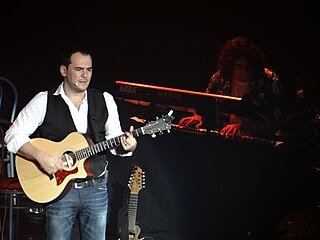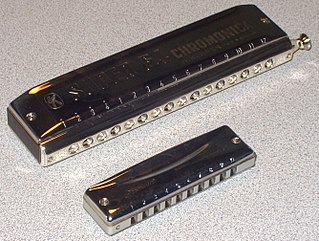Adolfo Urías y su Lobo Norteño is a Mexican Norteño-Sax band headed by Adolfo Urías. Although actually a band, many Mexicans think of him as a solo singer. His music, like Los Rieleros del Norte, Polo Urías, and Los Diamantes de Ojinaga, uses both the accordion and saxophone, while many other norteño groups play the accordion solo. Adolfo Urías, born in Ojinaga, Chihuahua, Mexico, learned to play the accordion at age 13. His hit, "Corazón Chiquito," was extremely popular on the regional Mexican radio in 2002. Recently, his song "Qué Chulos Ojos" became another big hit. His songs are in traditional ranchera form, but the lyrics feature modern themes. Adolfo Urías' uncle, Polo Urías, is also a norteño-sax singer.

Fernando Villalona, the first artist named "El Mayimbe", is a Dominican merengue singer who began singing in the early 1970s, his popularity started to grow by the late 1970s and has not declined ever since. Fernando began singing at a very early age and became popular after participating in "El Festival de la Voz", an amateur TV talent show. After that, merengue icon Wilfrido Vargas hired him to be part of his group Los Hijos del Rey but Fernando and the group would soon be separated after his popularity became larger than the group itself. He would then go into a period of drugs and isolation but never stopped singing, recording some of his best music during that period. In 2012, Villalona recorded "El Color de tu Mirada" with American singer/songwriter Victoria Daly. The music video was directed by Rene Brea in the Dominican Republic. It went to be nominated for "Best Music Video" at the Soberano Awards in 2013. Villalona began recording two singles with Latin sensation, Olga Tañon. Recording began in April, set to be released on her upcoming album.
Raulín Rodríguez is a bachata artist, one of the first major bachata artists to have national success and popularize this style of music in the Dominican Republic.
The anthem of the Aragua State, Venezuela, has lyrics composed by Ramón Bastidas, with music made by Manuel Betancourt.

Ismael Serrano is a singer/songwriter and guitarist from Spain, popular in Spain and Latin America, known for his often political lyrics and eclectic musical influences. During his creative career he has been influenced by other Spanish singer-songwriters such as Joaquín Sabina, Joan Manuel Serrat and the Cuban Silvio Rodríguez amongst others. His music also shows influences from renowned poets such as Luis García Montero and Mario Benedetti.

The Argentine Chamber of Phonograms and Videograms Producers is an Argentine organization member of the IFPI, which represents the music industry in the country. It is a nonprofit organization integrated by multinational and independent record labels.
Luis Segura, is a popular traditional Dominican singer who refers to himself as 'The Father of Bachata'. He is considered one of the best interpreters of traditional bachata with hits like "Pena por ti", "Dicen", and "No me celes tanto". Segura's first recordings were in the 1960s but it wasn't until his release of "Pena por ti" in the early 1980s that Segura hit stardom.

Víctor Manuel San José Sánchez is a Spanish singer-songwriter. He has been married to the Spanish singer and actress Ana Belén since 1972. He and his wife are considered symbols of the Spanish Transition, and his songs and albums often feature boldly-titled works with social and political content.
Ramón Orlando Valoy is a merengue musician and son of Cuco Valoy.

Pedro Vargas Mata was a Mexican singer and actor, from the golden age of Mexican cinema. He was known as the "Nightingale of the Americas".

Grupo Montéz de Durango or Montéz de Durango is a Duranguense band currently based in Chicago. This group is well known in the United States, Mexico and Central America. Although Grupo Montez de Durango's sound is deeply rooted in the music of traditional Mexican music, it is also influenced by the members' hometown of Chicago.
The following is Antony Santos discography.
Leonardo Paniagua is one of the Dominican Republic's most popular bachata musicians. He emerged from obscurity to overnight stardom in the 1970s, when he recorded his first 45rpm record, "Amada, Amante" for Discos Guarachita.
Los Yonic's are a Mexican Grupero band formed in the 1970s.
Bonny Cepeda is a merengue artist, band leader and producer. In 1986 he was nominated for a Grammy Award for Top Tropical Latin Performance for his album, Noche de Discotheque.
Carlos Martín Karpan credited as Martín Krpan in the credits of El Cuerpo de Deseo is an Argentine actor, notable for playing a villain in the telenovela El Cuerpo del Deseo and Te Voy a Enseñar a Querer.
Benita Puértolas was an Argentine film and theatre actress. She was the mother of the film actor Héctor Coire.
Isaías Lucero is a Mexican singer. He was formerly singer with Los Invasores de Nuevo León but left for a solo career with EMI Records in 1999.
Guardianes del Amor is a Mexican band formed in 1992. The band is the grupero act with the most nominations for Latin Grammy Award for Best Grupero Album with five, but has never won the award. The band's five members are Arturo Rodriguez, Oscar Saúl Cervantes, Daniel Poplawsky, Pablo Calderón and Ernesto Gracia.











